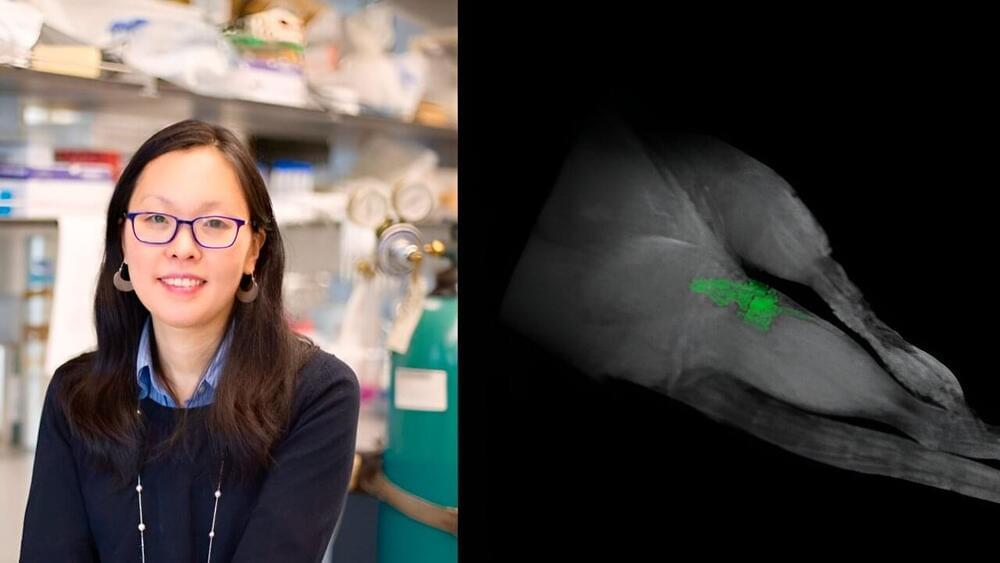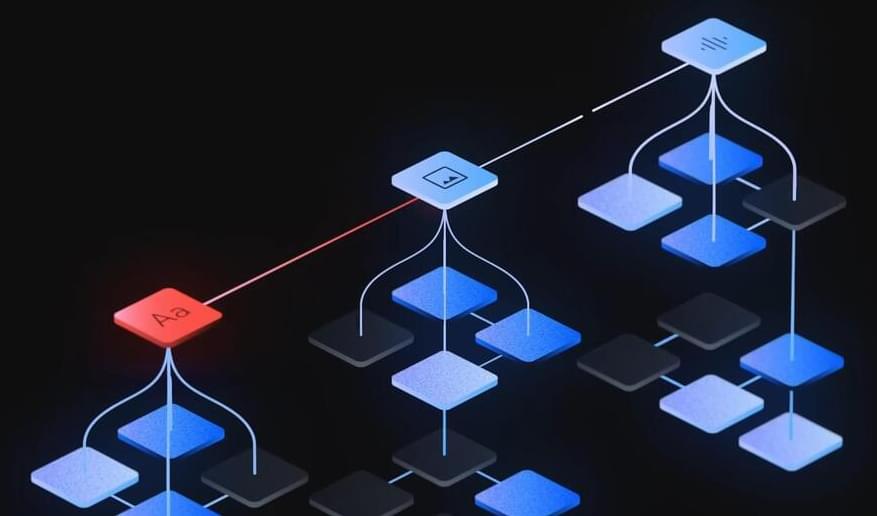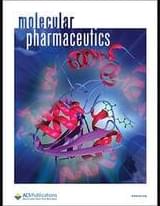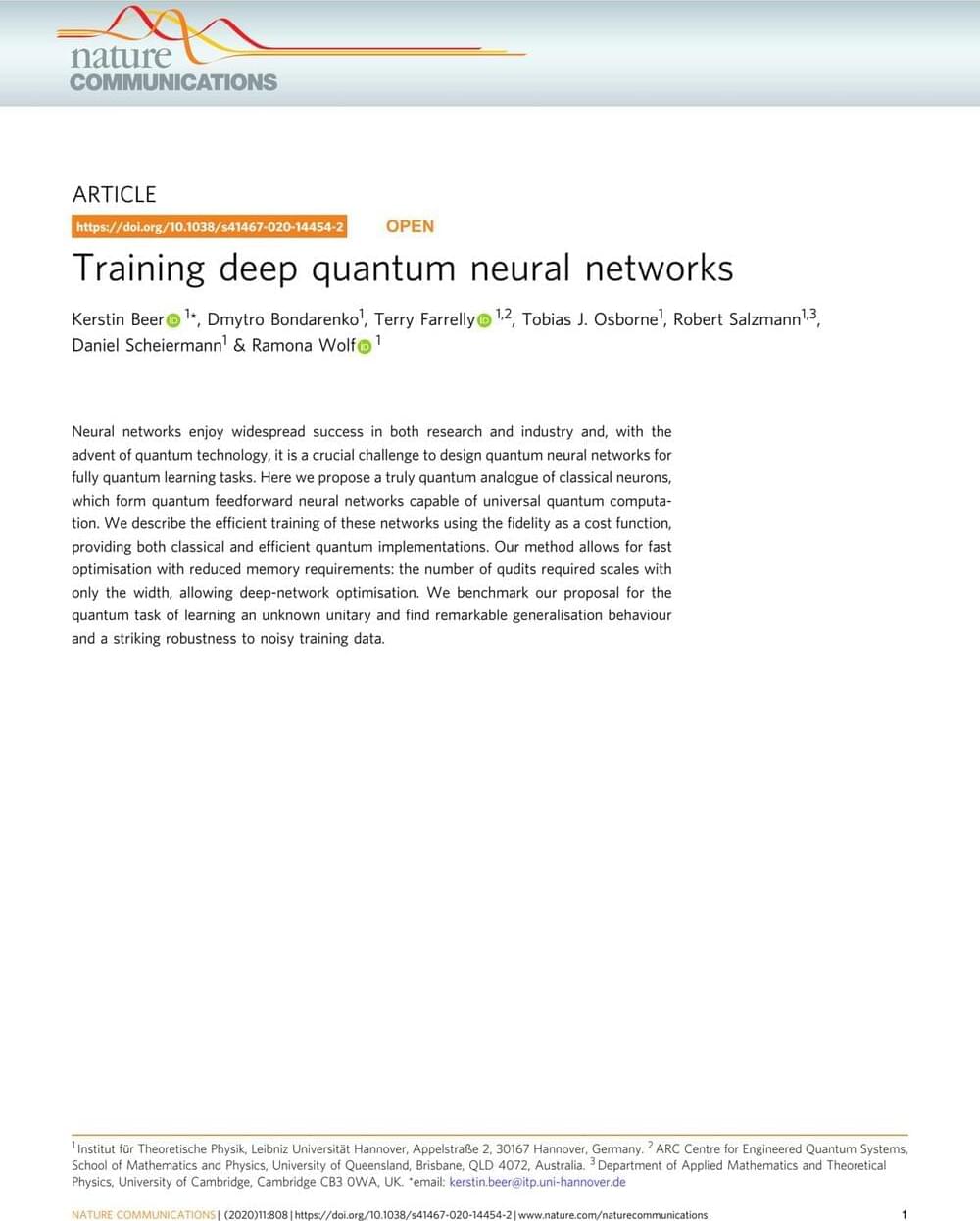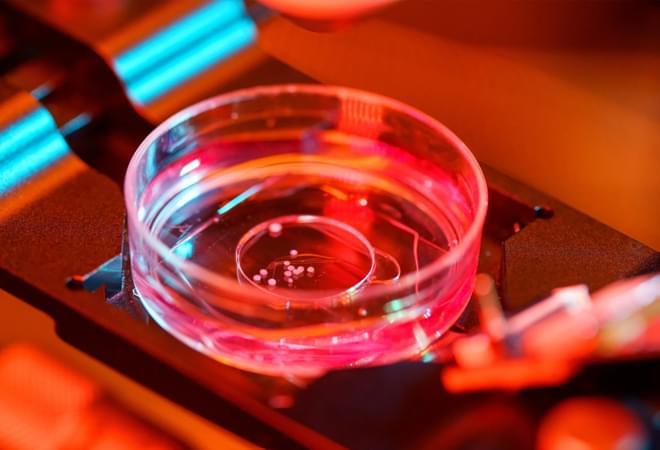Page 852
Dec 22, 2023
Researchers develop self-assembling, self-illuminating therapeutic proteins
Posted by Chris Mcaulay in categories: biotech/medical, chemistry, engineering
When it comes to delivering drugs to the body, a major challenge is ensuring that they remain in the area they’re treating and continuing to deliver their payload accurately. While major strides have been made in delivering drugs, monitoring them is a challenge that often requires invasive procedures like biopsies.
Researchers at NYU Tandon led by Jin Kim Montclare, Professor of Chemical and Biomolecular Engineering, have developed proteins that can assemble themselves into fibers to be used as therapeutic agents for the potential treatments of multiple diseases.
These biomaterials can encapsulate and deliver therapeutics for a host of diseases. But while Montclare’s lab has long worked on producing these materials, there was once a challenge that was hard to overcome—how to make sure that these proteins continued to deliver their therapeutics at the correct location in the body for the necessary amount of time.
Dec 22, 2023
Google Gemini Pro falls behind free ChatGPT, says study
Posted by Dan Kummer in category: futurism
A recent study by Carnegie Mellon University (CMU) shows that Google’s latest large language model, Gemini Pro, lags behind GPT-3.5 and far behind GPT-4 in benchmarks.
The results contradict the information provided by Google at the Gemini presentation. They highlight the need for neutral benchmarking institutions or processes.
Gemini Pro loses out to GPT-3.5 in benchmarks.
Dec 22, 2023
AI Coscientist automates scientific discovery
Posted by Dan Kummer in categories: chemistry, robotics/AI

A non-organic intelligent system has for the first time designed, planned and executed a chemistry experiment, Carnegie Mellon University researchers report in the journal Nature (“Autonomous chemical research with large language models”).
Dec 22, 2023
Chinese brain warfare includes sleep weapons, thought control
Posted by Dan Kummer in categories: biological, military, mobile phones, robotics/AI
I dont know about sleep weapons, it s possible probably. More concerning to me, i read a paper 20+ years back about cell towers and cell phone frequencies as a possible tool for mind control, some way connected to frequency of human brain.
China’s military is developing advanced psychological warfare and brain-influencing weapons as part of a new warfighting strategy, according to a report on People’s Liberation Army cognitive warfare.
The report, “Warfare in the Cognitive Age: NeuroStrike and the PLA’s Advanced Psychological Weapons and Tactics,” was published earlier this month by The CCP Biothreats Initiative, a research group.
Continue reading “Chinese brain warfare includes sleep weapons, thought control” »
Dec 22, 2023
A Comprehensive Study on Nanoparticle Drug Delivery to the Brain: Application of Machine Learning Techniques
Posted by Kelvin Dafiaghor in categories: biotech/medical, chemistry, nanotechnology, robotics/AI
The delivery of drugs to specific target tissues and cells in the brain poses a significant challenge in brain therapeutics, primarily due to limited understanding of how nanoparticle (NP) properties influence drug biodistribution and off-target organ accumulation. This study addresses the limitations of previous research by using various predictive models based on collection of large data sets of 403 data points incorporating both numerical and categorical features. Machine learning techniques and comprehensive literature data analysis were used to develop models for predicting NP delivery to the brain. Furthermore, the physicochemical properties of loaded drugs and NPs were analyzed through a systematic analysis of pharmacodynamic parameters such as plasma area under the curve. The analysis employed various linear models, with a particular emphasis on linear mixed-effect models (LMEMs) that demonstrated exceptional accuracy. The model was validated via the preparation and administration of two distinct NP formulations via the intranasal and intravenous routes. Among the various modeling approaches, LMEMs exhibited superior performance in capturing underlying patterns. Factors such as the release rate and molecular weight had a negative impact on brain targeting. The model also suggests a slightly positive impact on brain targeting when the drug is a P-glycoprotein substrate.
Dec 22, 2023
S41467-020–14454-2.Pdf
Posted by Dan Breeden in categories: quantum physics, robotics/AI
Dec 22, 2023
Astronomers discover 25 ‘stripped stars’ that may be a missing link in supernova science
Posted by Dan Breeden in categories: cosmology, science
The discovery of stars with their outer layers of hydrogen stripped by companions fills a glaring hole in our understanding of supernovas and binary systems with colliding neutron stars.
Dec 22, 2023
Organoid Intelligence: Biology and the future of computing
Posted by Dan Breeden in categories: biological, computing
The advantages of biological learning make OI a tempting notion to embrace, however, there are significant ethical and technological hurdles to overcome before we develop an OI biocomputer.
Dec 22, 2023
Ultrasound-Triggered In Situ Photon Emission for Noninvasive Optogenetics
Posted by Dan Breeden in categories: biotech/medical, genetics, nanotechnology, neuroscience
Optogenetics has revolutionized neuroscience understanding by allowing spatiotemporal control over cell-type specific neurons in neural circuits. However, the sluggish development of noninvasive photon delivery in the brain has limited the clinical application of optogenetics. Focused ultrasound (FUS)-derived mechanoluminescence has emerged as a promising tool for in situ photon emission, but there is not yet a biocompatible liquid-phase mechanoluminescence system for spatiotemporal optogenetics. To achieve noninvasive optogenetics with a high temporal resolution and desirable biocompatibility, we have developed liposome (Lipo@IR780/L012) nanoparticles for FUS-triggered mechanoluminescence in brain photon delivery. Synchronized and stable blue light emission was generated in solution under FUS irradiation due to the cascade reactions in liposomes.

